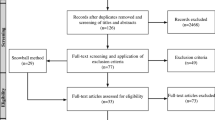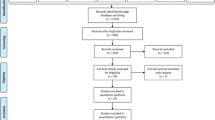Abstract
We present an architectural framework along with a set of middleware elements, facilitating the integration of perceptual components, sensors, actuators, and context-modeling scripts, comprising sophisticated ubiquitous computing applications in smart spaces. The architecture puts special emphasis on the integration of perceptual components contributed by a variety of technology providers, which has not been adequately addressed in legacy architectures. Moreover, the introduced architecture allows for intelligent discovery and management of resources. Along with the description of this breadboard architecture, we present its non-functional features and assess its performance. We also outline a rich set of practical prototype pervasive services that have been built, based on this architecture. These services emphasize on providing non-obtrusive human-centric assistance (e.g., memory aids, meeting recordings, pertinent information) in the scope of meetings, lectures and presentation, Experiences from building these services manifest the benefits of the introduced architecture.
















Similar content being viewed by others
Notes
Agent level processing was supported by a dual-processor (2.4 GHz) Zeon machine.
References
Weiser M (1991) The computer for the 21st century. Sci Am 265(3):66–75
Dey AK (2001) Understanding and using context. Pers Ubiquitous Comput J 5(1):4–7
Dey AK, Salber D, Adowd GD (2001) A conceptual framework and a toolkit for supporting the rapid prototyping of context-aware applications. Hum Comput Interact J 16:97–166
Want R, Hopper A, Falcao V, Gibbons J (1992) The active badge location system. ACM Trans Inform Syst 10(1):91–102
Smailagic A, Siewiorek D (2002) Application design for wearable and context-aware computers. IEEE Pervasive Comput 1(4):20–29
Johanson B, Fox A, Winograd T (2002) The interactive workspaces project: experiences with ubiquitous computing rooms. IEEE Pervasive Comput Mag 1(2):67–75
Yau SS, Karim F, Yu W, Bin W, Gupta SKS (2002) Reconfigurable context-sensitive middleware for pervasive computing. IEEE Pervasive Comput (joint special issue with IEEE Pers Commun Context-Aware Pervasive Comput) 1(3):33–40
Ponnekanti SR, Johanson B, Kiciman E, Fox A (2003) Portability, extensibility and robustness in iROS. In: Proceedings of the 1st IEEE international conference on pervasive computing and communications PERCOM. IEEE Computer Society, Washington, pp 11–19
Coen M, Phillips B, Warshawsky N, Weisman L, Peters S, Finin P (1999) Meeting the computational needs of intelligent environments: the Metaglue system. In: Proceedings of the 1st international workshop on managing interactions in smart environments. Dublin, Ireland, pp 201–212
Saif U, Pham H, Paluska JM, Waterman J, Terman C, Ward S (2003) A case for goal-oriented programming semantics. In: Workshop on system support for ubiquitous computing (UbiSys’03), 5th international conference on ubiquitous computing (Ubicomp 2003). Seattle, 12 October 2003, pp 74–83
Brumitt B, Krumm J, Meyers B, Shafer S (2000) Ubiquitous computing and the role of geometry. IEEE Pers Commun 7(5):41–43
Shafer S, Krumm J, Brumitt B, Meyers B, Czerwinski M, Robbins D (1998) The new EasyLiving project at microsoft research joint DARPA/NIST smart spaces workshop. Gaitherburg, Maryland, 30–31 July 1998, pp 127–130
Garlan D, Siewiorek D, Smailagic A, Steenkiste P (2002) Project aura: towards distraction-free pervasive computing. IEEE Pervasive Comput 1(2):22–31
The CHIL project, http://www.chil.server.de
Soldatos J, Pandis I, Stamatis K, Polymenakos L, Crowley JL (2006) Agent based middleware infrastructure for autonomous context-aware ubiquitous computing services, Computer Communications, Elsevier (in press) DOI 10.1016/j.comcom.2005.11.018
Soldatos J, Polymenakos L, Pnevmatikakis A, Talantzis F, Stamatis K, Carras M (2005) Perceptual interfaces and distributed agents supporting ubiquitous computing services. In: Proceedings of the Eurescom Summit 2005. Heidelberg, pp 43–50
Pandis I, Soldatos J, Paar A, Reuter J, Carras M, Polymenakos L (2005) An ontology-based framework for dynamic resource management in ubiquitous computing environments. In: Proceedings of the 2nd international conference on embedded software and systems, Xi’an, 16–18 December 2005, pp 195–203. ISBN 0-7695-2512-1
Pnevmatikakis A, Soldatos J, Talantzis F, Polymenkos L (2006) Robust multimodal audio-visual processing for advanced context awareness in smart spaces. In: Magloniannis I, Karpouzis K, Bramer M (eds) 3rd IFIP conference in artificial intelligence applications and innovations, AIAI 2006. Springer series: IFIP, vol 204. Springer, Berlin Heidelberg New York
Soldatos J, Stamatis K, Azodolmolky S, Pandis I, Polymenakos L (2007) Semantic web technologies for ubiquitous computing resource management in smart spaces. Int J Web Eng Technol (in press)
Tesauro G, Chess DM, Walsh WE, Das R, Segal A, Whalley I, Kephart JO, White SR (2004) A multi-agent systems approach to autonomic computing, AAMAS In: 3rd international joint conference on autonomous agents and multi-agent systems (AAMAS’04), vol 1. Columbia University, New York, pp 464–471
Java Agent Development Environment, http://jadetilabcom/
FIPA—The Foundation for Intelligent Physical Agents, http://wwwfipaorg
Rosenthal L, Stanford VM (2000) NIST smart space: pervasive computing initiative. In: Proceedings of the 9th IEEE international workshops on enabling technologies: infrastructure for collaborative enterprises WETICE. IEEE Computer Society, Washington, 4–16 June 2000, pp 6–11
UPnP Forum (2003) UPnP device architecture 1.0. Available at: http://www.upnp.org/
Guttman E, Perkins C, Veizades J, Day M (1999) RFC 2608: service location protocol, Version 2. Available at: http://www.ietf.org/rfc/
UDDI Consortium (2002) UDDI technical white paper. Available at: http://www.uddi.org/pubs/
Czerwinski SE, Zhao BY, Hodes TD, Joseph AD, Katz RH (1999) An architecture for a secure service discovery service. In: Proceedings of the 5th annual international conference on mobile computing and networking (Seattle, Washington, USA) Mobicom’99. ACM Press, New York, pp 24–35. DOI http://doi.acm.org/10.1145/313451.313462
Zhu F, Mutka M, Ni L (2003) Splendor: a secure, private, and location-aware service discovery protocol supporting mobile services. In: Proceedings of the 1st IEEE international conference on pervasive computing and communications PERCOM. IEEE Computer Society, Washington, pp 235–242
W3C Recommendation (2004) OWL web ontology language overview. Available at: http://www.w3.org/TR/owl-features/
Möller R, Haarslev V (2004) RACER: renamed ABox and concept expression reasoner, Hamburg. Available at: http://www.sts.tu-harburg.de/∼r.f.moeller/racer/
Brandstein M, Ward D (2001) Microphone arrays: signal processing techniques and applications. Springer-Verlag, Berlin
Murphy A, Picco GP, Roman G-C (2001) LIME: a middleware for physical and logical mobility. In: Golshani F et al. (eds) Proceedings of the 21st international conference in distributed computing systems(ICDCS-21). Phoenix, AZ, pp 524–533
Pnevmatikakis A, Polymenakos L (2005) An automatic face detector and recognition system for video streams. In: Proceedings of the 2nd joint workshop on multimodal interaction and related machine learning algorithms. Edinburg
Stergiou A, Pnevmatikakis A, Polymenakos L (2005) Audio/visual person identification. In: Proceedings of the 2nd joint workshop on multimodal interaction and related machine learning algorithms. Edinburg
Talantzis F, Constantinides AG, Polymenakos L (2005) Estimation of direction of arrival using information theory. IEEE Signal Process 12(8):561–564
Pnevmatikakis A, Polymenakos LC (2004) Comparison of eigenface-based feature vectors under different impairments. In: Proceedings of the 17th international conference on pattern recognition (ICPR’04), vol 1. Cambridge, 23–26 August 2004, pp 296–299
Crowley JL (2003) Context driven observation of human activity. Lecture notes in computer science (Ambient Intelligence), vol 2875, Springer, Berlin Heidelberg New York, pp 101–118
Azodolmolky S, Dimakis N, Mylonakis V, Souretis G, Soldatos J, Pnevmatikakis A, Polymenakos L (2005) Middleware for in-door ambient intelligence: the polyomaton system. In: Proceedings of the 2nd international conference on networking, next generation networking middleware (NGNM 2005). Waterloo, 2–6 May 2005
Minar N, Gray M, Roup O, Krikorian R, Maes P (200) Hive: distributed agents for networking things. IEEE Concurr 8(2):24–33
Soldatos J (2006) Software agents in ubiquitous computing: benefits and the CHIL case study. In: Proceedings of the software agents in information systems and industrial applications (SAISIA 2006) workshop. Karlsruhe
Hibernate Relational Persistence for Java and .NET, http://www.hibernate.org
Stanford V (2003) Pervasive computing goes the last hundred feet with RFID systems. IEEE Pervasive Comput 2(2):9–14
Stanford V (2002) Pervasive computing goes to work: interfacing to the enterprise. IEEE Pervasive Comput 1(3):6–12
Stanford V (2002) Pervasive computing: applications—using pervasive computing to deliver elder care. IEEE Distrib Syst Online 3(3):10–13
Acknowledgments
This work is part of the FP6 CHIL project (FP6-506909), partially funded by the European Commission under the Information Society Technology (IST) program. The authors acknowledge valuable help and contributions from all partners of the project, especially of partners participating in WP2, which defines the software architecture of the project.
Author information
Authors and Affiliations
Corresponding author
Rights and permissions
About this article
Cite this article
Soldatos, J., Dimakis, N., Stamatis, K. et al. A breadboard architecture for pervasive context-aware services in smart spaces: middleware components and prototype applications. Pers Ubiquit Comput 11, 193–212 (2007). https://doi.org/10.1007/s00779-006-0102-7
Received:
Accepted:
Published:
Issue Date:
DOI: https://doi.org/10.1007/s00779-006-0102-7




